Understanding the end-user experience has always been important. However, the true benefit is not just in “Digital Experience Monitoring”, but rather in leveraging the data from that to better manage devices. The goal must be to identify issues on a small number of devices as they happen so that you can mitigate against those problems occurring on a large number of devices.
DEM+
Tachyon Experience goes beyond Digital Experience Monitoring to also include Management and Remediation. That’s why we like to call it “DEM+”.
To have the monitoring capability without the associated “plus” is to have knowledge without the ability to act. That’s possibly even worse than action without knowledge. As with most things in life, it is when you marry good data (knowledge) with the ability to act appropriately that you get the best results.
The four parts of this series are as follows:
- Identifying Stability issues in a WFA environment
- Identifying Performance issues in a WFA environment
- Identifying Responsiveness issues in a WFA environment
- Gauging end-user sentiment in a WFA environment
This part, Sentiment, is perhaps the least technical and most important of the four.
In v5.0 of Tachyon, Stability, Responsiveness and Performance formed a triumvirate of metrics. If a device was not Stable, the user couldn’t be happy with it. If Performance was good, but Responsiveness was bad, we assumed the users wouldn’t be satisfied… but we had no way of knowing or measuring that satisfaction. Monitoring that sentiment came along in v5.1, launched just this month, and it is a powerful feature—especially in this Work from Anywhere world we find ourselves in.
What is Tachyon Sentiment?
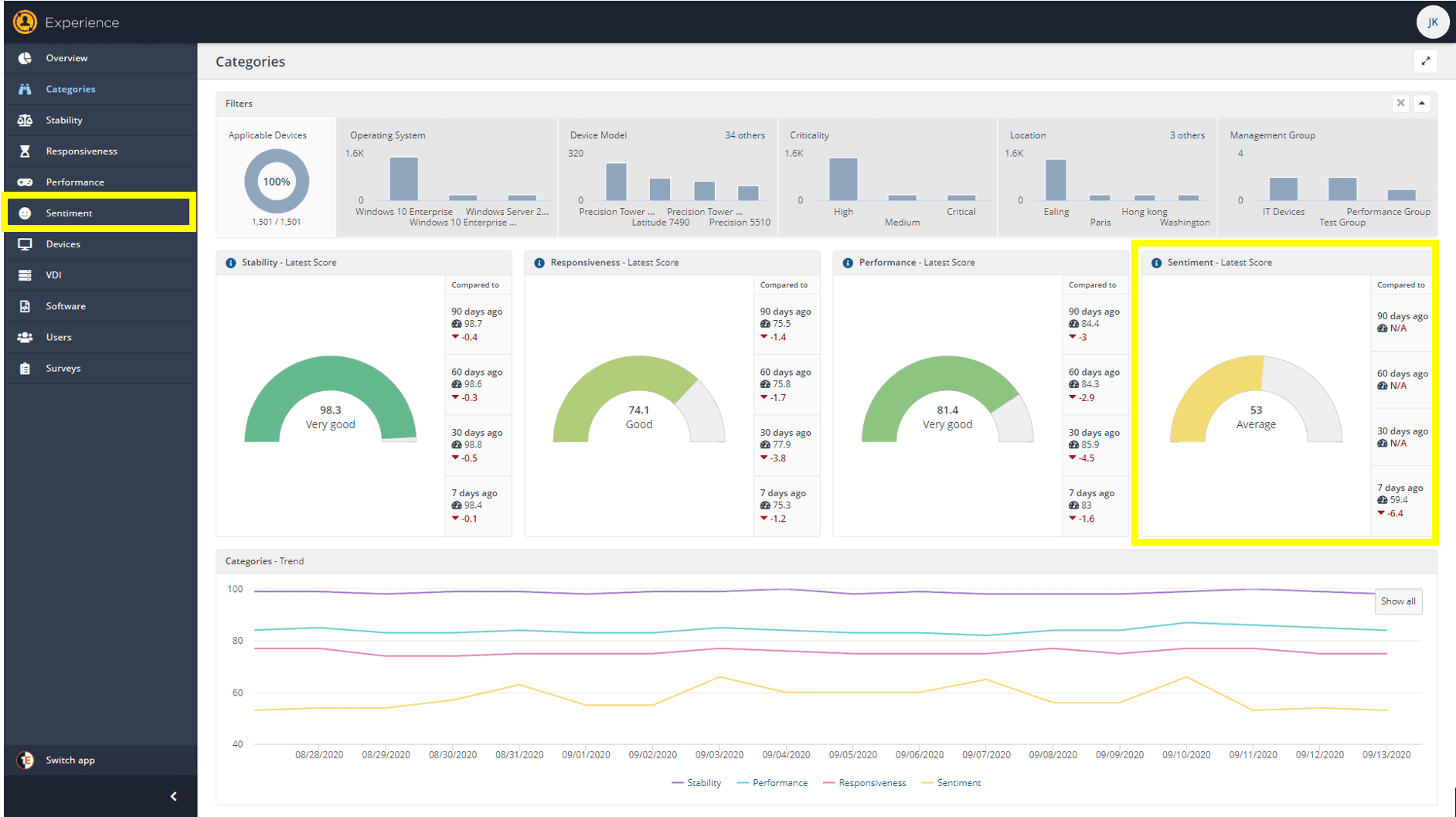
In essence, Sentiment is driven by user feedback provided to sets of surveys—but the surveys in Tachyon are quite unique. First off, each survey is just one question.
I’ll let that sink in for a while. “Why only one question?” I hear you ask…well, because 1E has long had a “first do no harm” attitude to writing code. Nomad is about content delivery, but first does no harm to business traffic. Tachyon instructions are about speed, but first does no harm to the endpoint, network, or server. One thing end users don’t appreciate is filling in surveys with dozens of questions. We’re all familiar with that ever-present hope that the next question will be the last when filling in “a short survey”.
Well, Tachyon Sentiment surveys are all really short. We want users to feel comfortable clicking an option, safe in the knowledge that they won’t be bothered again for a reasonably long time. They won’t face question after question.
As you can see below, the questions can be multiple choice, and you can craft them to your needs:
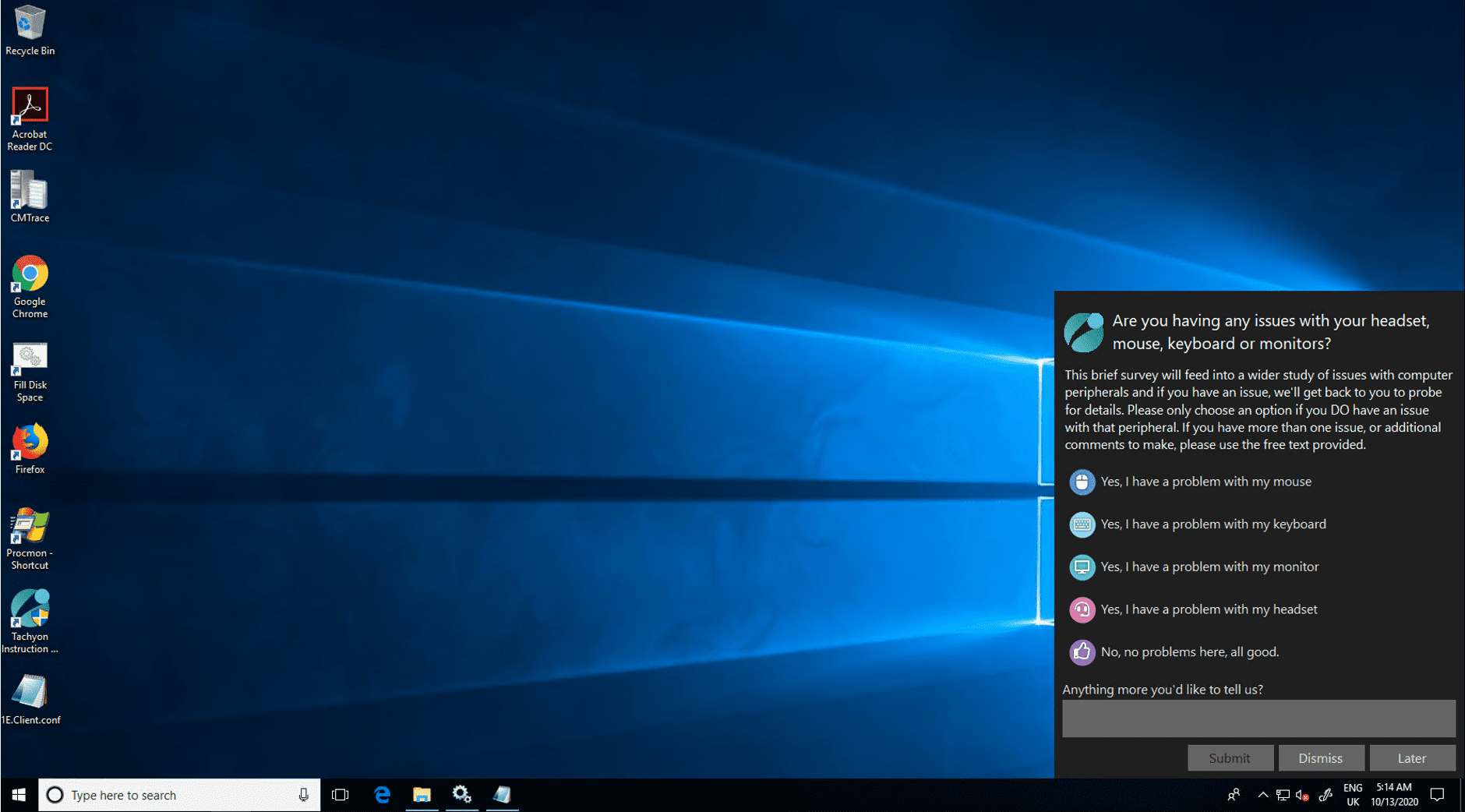
Sentiment is aimed at gathering specific data from specific users and broad-spectrum sentiment across all users.

You choose the topics while Tachyon ensures you get the best possible results, without annoying your end users. You don’t want “Sentiment” gathering to be detrimental to user sentiment!
1E has gone to tremendous ends to ensure end users are present when a survey pops up, and that they are not in the middle of doing something. Settings ensure that if the end user is typing or moving their mouse, the pop up won’t interrupt them. If the user has been away from their device for a long time, the survey won’t display (because the user may not be there). There is a balance, which can be fine-tuned, wherein the user isn’t busy actively using their mouse and keyboard, but they are likely still in front of the device. At that time, you can pop up a quick one-question survey and ask for their feedback.
A use case for Tachyon Sentiment
Tachyon Sentiment surveys are flexible to fit your needs:
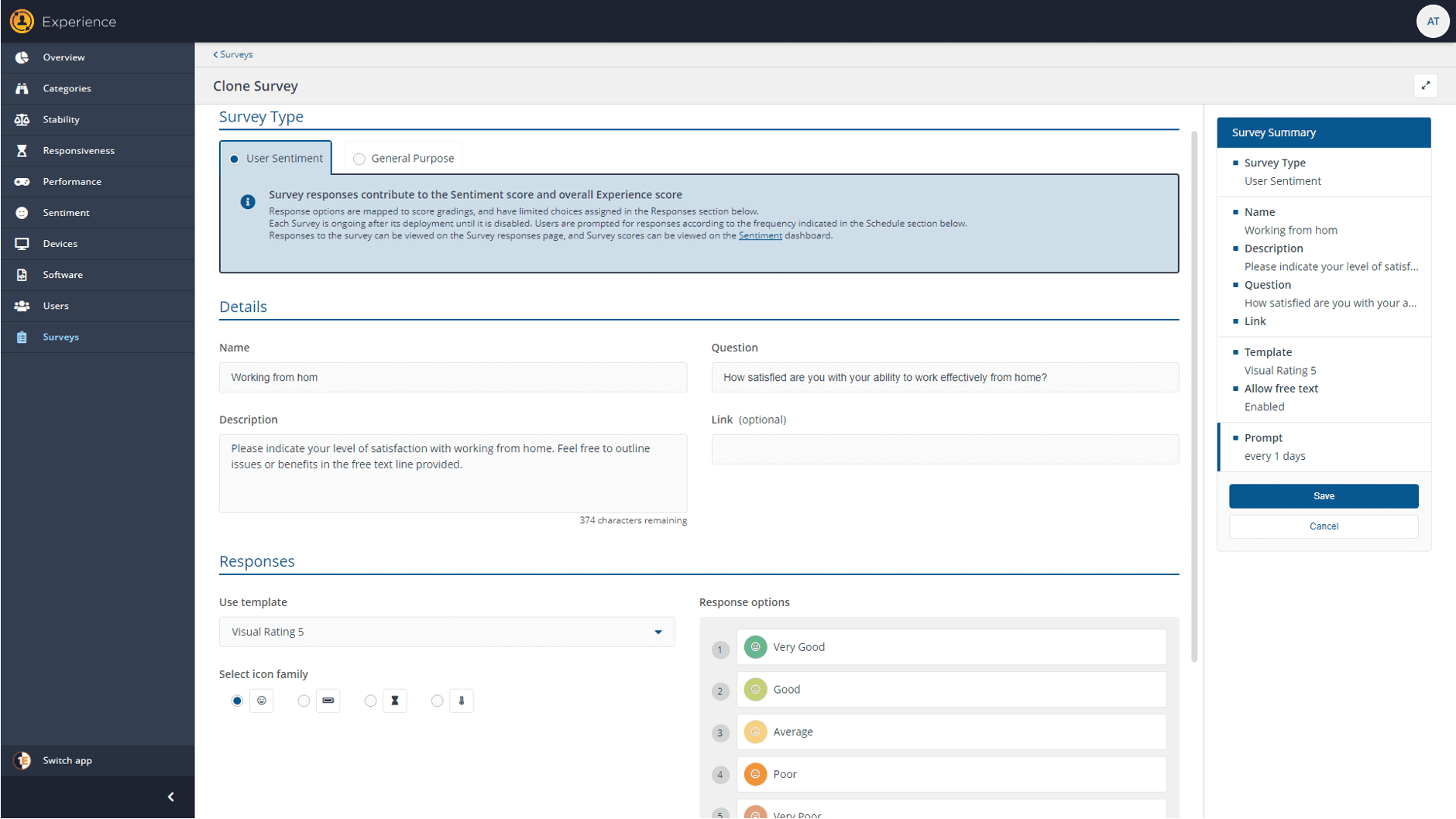
“User Sentiment” surveys count towards the sentiment dashboards, showing trends over time and allowing you to dig into what’s happening with end users.
This in turn allows you to juxtapose the actual sentiment of the users against the Stability, Responsiveness and Performance metrics to see how they compare. The differences can help fuel important decisions, which in turn help intelligent IT departments reduce cost as well as increase end-user satisfaction.
For example, if there are users whose machines are running slowly (according to Responsiveness and Performance) but who are not reporting issues in “Sentiment”, then why replace their devices, even if they have hit the 3-year refresh cycle? If it isn’t broken, don’t fix it! Identify other users (who may have better devices) who are reporting issues and replace or upgrade their devices first.
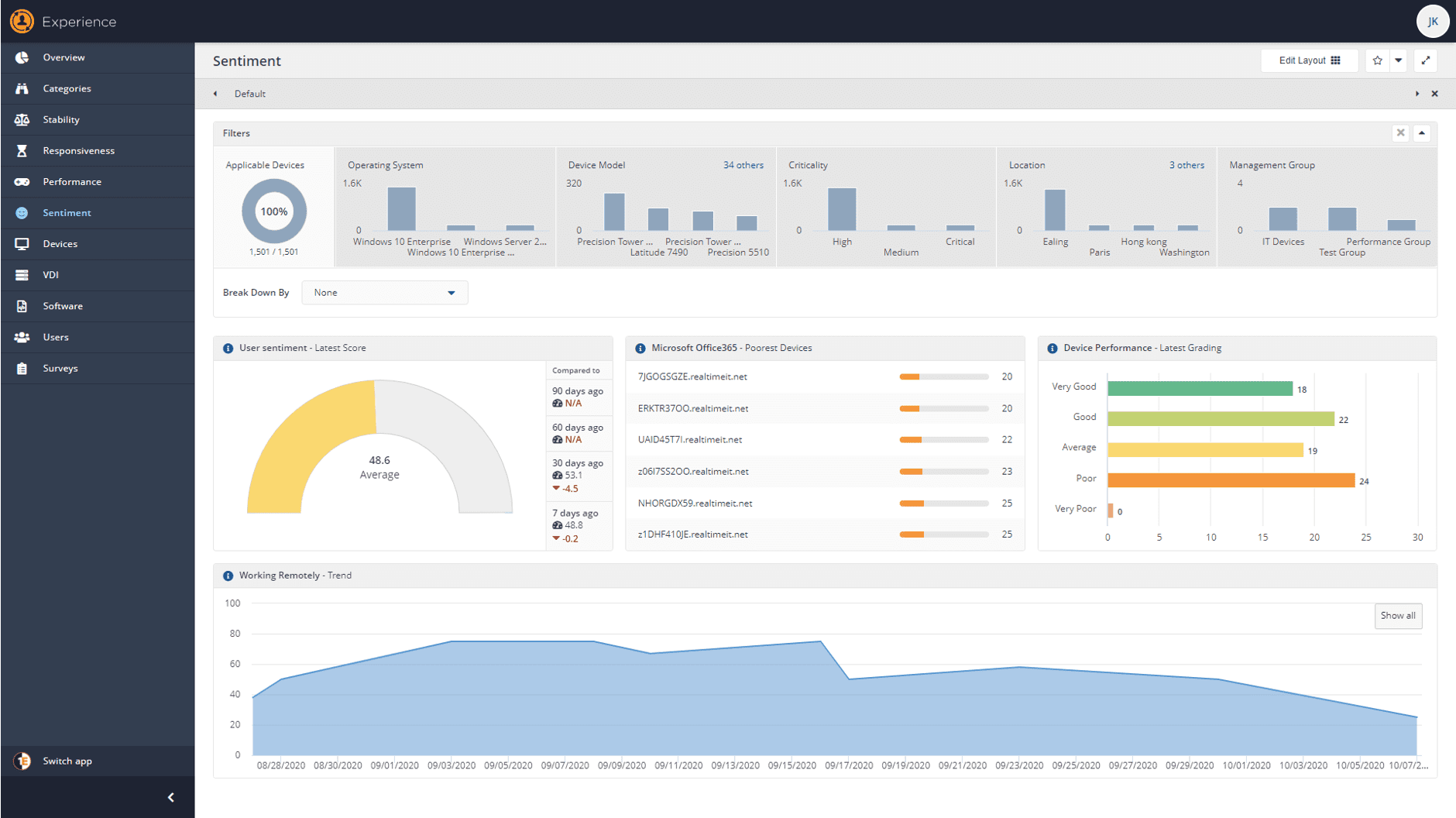
The data can be viewed in multiple ways, device centric or user centric.
It’s easy to use the overarching combination of “Experience” data to guide better, more intelligent decisions about where to focus resources and budget.
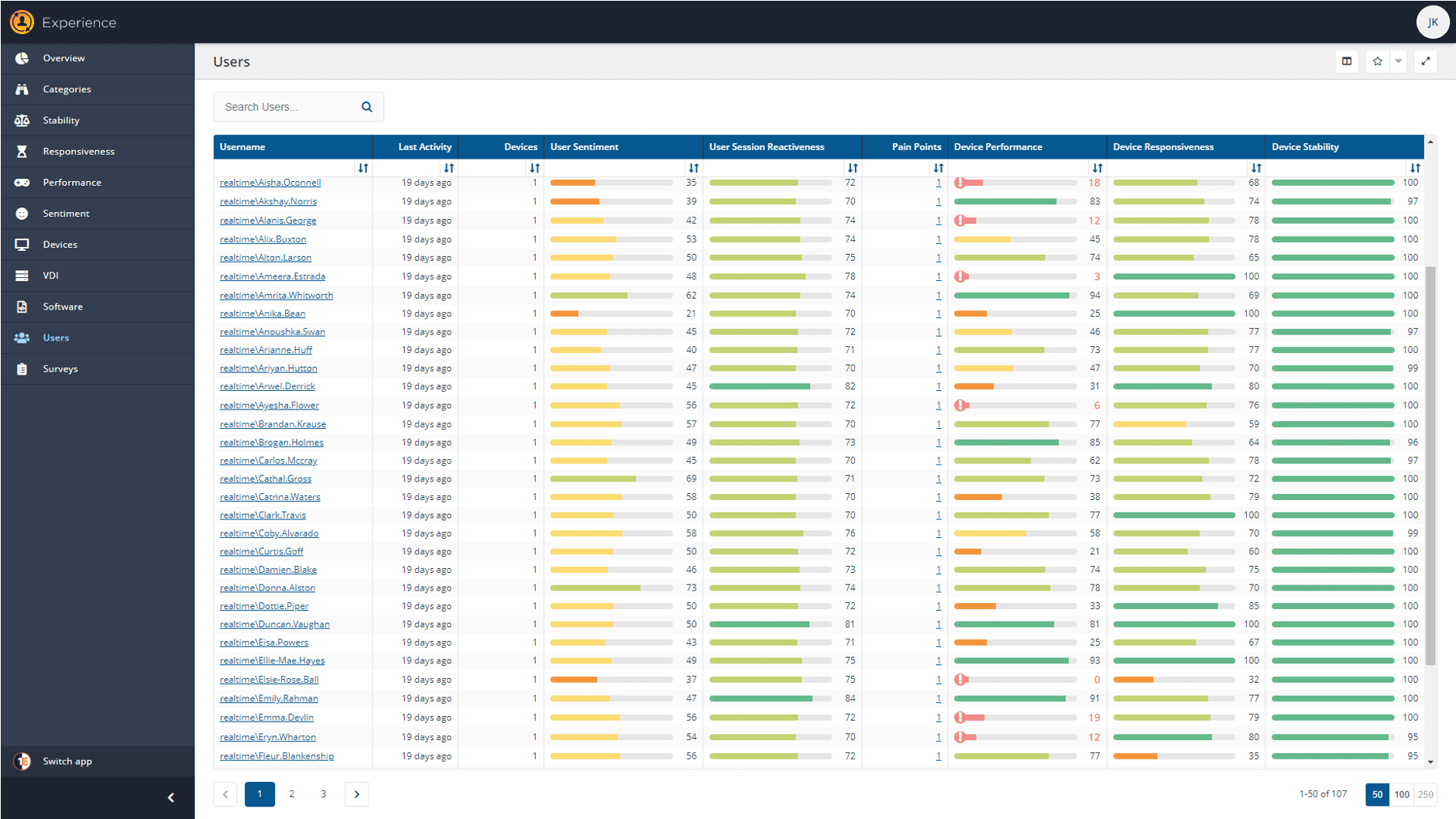
See Tachyon Sentiment in action
Sentiment in Tachyon v5.1 continues to show innovation from 1E in the DEM space. When coupled with the management and automation features of Tachyon, this really is real-time IT for the Work from Anywhere Enterprise.
Want to see Sentiment in action? Register for the launch webinar here.




